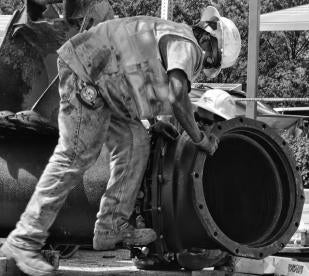On January 13, 2017, just one week before President Trump’s inauguration, PHMSA released final updates to the Pipeline Safety Regulations applicable to onshore transportation of hazardous liquids (“Final Rule”). The Final Rule was then subject to the Priebus Memo and swiftly withdrawn by PHMSA on January 24, 2017. As with other rules subject to the Priebus Memo, the Final Rule must now be reviewed by a member of the Trump Administration. The ultimate fate of the Final Rule is a bit uncertain, particularly because certain aspects were supported by the industry.
Many in the pipeline industry recognize PHMSA’s regulatory oversight as an important component of enhancing pipeline safety. Several such stakeholders worked collaboratively with the Obama Administration during development to the Final Rule. While the Final Rule removes some of the sticking points industry had issue with in the October 2015 proposal, some concerns still remain. Industry efforts to revisit specific provisions that are unworkable are expected to include direct engagement with PHMSA as well as regulatory reform on specific issues. This blog provides a high-level summary of key components of the Final Rule as released by PHMSA in January 2017.
Background on PHMSA’s Regulation of Hazardous Liquid Pipelines
Just over a decade after Congress promulgated the Natural Gas Pipeline Safety Act, which established safety standards for natural gas pipelines, PHMSA’s regulatory program for hazardous liquids pipelines was created with the passage of the Hazardous Liquid Pipeline Safety Act (HLPSA) of 1979. The HLPSA, which is currently codified in the Pipeline Safety Laws, gave the Department of Transportation authority to promulgate minimum Federal safety standards for hazardous liquid pipelines. PHMSA did just that with in Part 195 of the Pipeline Safety Regulations. 49 C.F.R. § 195.0, et seq.
Part 195 applies to interstate pipelines that transport hazardous liquids or carbon dioxide and associated facilities, including pipelines situated on the Outer Continental Shelf (OCS). See 49 C.F.R. § 195.1. Generally, existing Part 195 lays out standards for design, construction, pressure testing, operation and maintenance, corrosion control, how personnel should be trained and qualified, accident reporting and recordkeeping. With a core focus on safety, Part 195 also includes an integrity management program that covers pipelines in high consequence areas (HCAs) or locations that have a high population density or are environmentally sensitive. Part 195 also lays out the method by which States can become certified to regulate the safety standards of intrastate pipelines.
Key Provisions of the Final Rule
The Final Rule includes a wide range of new requirements for operators of hazardous liquid pipelines, including those pipelines outside of HCAs. The Final Rule extends the requirement to use leak detection systems beyond HCAs to all regulated, non-gathering hazardous liquid pipelines. Additionally, integrity assessments are now required at least once every 10 years for onshore, piggable, transmission hazardous liquid pipeline segments located outside of HCAs. With respect to pipelines in or affecting HCAs, PHMSA has adopted a new requirement that such pipelines accommodate in-line inspection tools within 20 years, unless the basic construction of a pipeline cannot be modified to permit that accommodation. The Final Rule also sets out new reporting obligations for certain hazardous liquid gravity and rural gathering lines and guidelines for the inspection of pipelines in areas affected by extreme weather, natural disasters, and other similar events.
PHMSA was responsive to certain of industry’s concerns in crafting the Final Rule; however, in some areas, there appears to be a gap in understanding as to how prescriptive rules and a uniform approach can be problematic to impose on a dynamic industry. A few such areas are discussed below.
PHMSA Expands Requirements Beyond HCAs
Prior to the Final Rule, the integrity management and leak detection requirements in Part 195 applied only to pipelines in HCAs, i.e., those pipelines situated in areas with a higher population density or with some level of environmental sensitivity. Under the revised regulations, new Section 195.416 Pipeline Assessments, requires operators to inspect onshore transmission pipelines that are not in HCAs and subject to Part 195 integrity management if such pipelines “can accommodate inspection by means of in-line inspection tools.” Subsection 195.416 requires operators to perform an initial assessment via in-line inspection at each of its pipeline segments by December 31, 2027 and then once every 10 years thereafter.
PHMSA mandates the use of in-line inspection tools unless “impracticable based on operational limits, including operating pressure, low flow, and pipeline length or availability of in-line inspection tool technology for the pipe diameter.” If impracticable, PHMSA permits an assessment be performed by either a pressure test, an external corrosion direct assessment in accordance with § 195.588; or “other technology” if the operator notifies PHMSA appropriately. PHMSA has also revised existing Subsection 195.134 requiring all pipelines, including those situated outside of HCAs, to have a leak detection system that meets the requirements of Subsection 195.444. Existing pipelines are given a five-year implementation period, while pipelines constructed after the date the rule is published in the Federal Register have one year to implement the leak detection requirements.
New Design Mandates for Pipelines in HCAs
One of the potentially more costly aspects of the Final Rule requires operators to modify pipelines that could affect an HCA to accommodate inline inspection tools over the next 20 years. New Subsection 195.452(n) requires an operator to “ensure that each pipeline is modified to accommodate the passage of an instrumented internal inspection device” within 20 years from the effective date of the Final Rule. Operators are given the option of filing a petition for exclusion from this requirement to the extent (1) the basic construction of the relevant pipeline (i.e., length, diameter, operating pressure, or location) “cannot be modified to accommodate” an instrumented internal inspection device, or (2) that the operator determines it would have to abandon or shut-down a pipeline as a result of the cost to comply. PHMSA does not estimate any cost associated with 195.452(n), industry however has cited millions in potential costs to design a pipeline capable of accommodating inline inspection tools.
Other Changes
The Final Rule will require operators of gravity and rural gathering lines to report information to PHMSA on an annual basis, commencing one year from the effective date. New Section 195.414 sets forth mandatory pipeline inspections for all pipelines potentially affected by “an extreme weather event such as a hurricane or flood, an earthquake, landslide, a natural disaster, or other similar events that have the likelihood of damage to infrastructure.” Once the extreme event subsides, an operator is required to commence an inspection within 72 hours and take “prompt and appropriate remedial action,” which might include:
(1) Reducing the operating pressure or shutting down the pipeline;
(2) Modifying, repairing, or replacing any damaged pipeline facilities;
(3) Preventing, mitigating, or eliminating any unsafe conditions in the pipeline right-of-way;
(4) Performing additional patrols, surveys, tests, or inspections;
(5) Implementing emergency response activities with Federal, State, or local personnel; and
(6) Notifying affected communities of the steps that can be taken to ensure public safety.
Another key component of the Final Rule relates to how an operator determines the need to make pipeline repairs. PHMSA has revised the criteria for how to determine immediate versus non-immediate repairs, including the timeframes for undertaking such repairs. Under the Final Rule, certain pipeline anomalies previously not considered as “immediate” concerns now meet that requirement. Subsection 195.452(h) & (i) establish addressing anomalous conditions and how to prepare for “Immediate repair conditions.”
At this point, we have no updates as to the status of the Trump Administration’s review of the Final Rule.




 i
i

